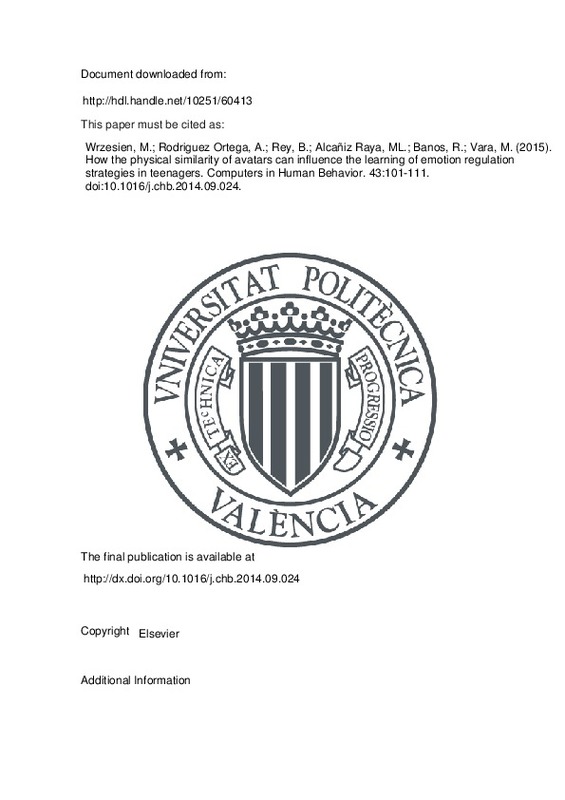JavaScript is disabled for your browser. Some features of this site may not work without it.
Buscar en RiuNet
Listar
Mi cuenta
Estadísticas
Ayuda RiuNet
Admin. UPV
How the physical similarity of avatars can influence the learning of emotion regulation strategies in teenagers
Mostrar el registro completo del ítem
Wrzesien, M.; Rodriguez Ortega, A.; Rey, B.; Alcañiz Raya, ML.; Banos, R.; Vara, M. (2015). How the physical similarity of avatars can influence the learning of emotion regulation strategies in teenagers. Computers in Human Behavior. 43:101-111. doi:10.1016/j.chb.2014.09.024
Por favor, use este identificador para citar o enlazar este ítem: http://hdl.handle.net/10251/60413
Ficheros en el ítem
Metadatos del ítem
| Título: | How the physical similarity of avatars can influence the learning of emotion regulation strategies in teenagers | |
| Autor: | Wrzesien, Maja Banos, R.M. Vara, M.D. | |
| Entidad UPV: |
|
|
| Fecha difusión: |
|
|
| Resumen: |
The aim of this study is to evaluate the influence of the physical similarity of avatars with the user on emotion regulation strategy training. In this study twenty-four teenagers observed an avatar (either physically ...[+]
|
|
| Palabras clave: |
|
|
| Derechos de uso: | Reserva de todos los derechos | |
| Fuente: |
|
|
| DOI: |
|
|
| Editorial: |
|
|
| Versión del editor: | http://dx.doi.org/10.1016/j.chb.2014.09.024 | |
| Tipo: |
|







![[Cerrado]](/themes/UPV/images/candado.png)


